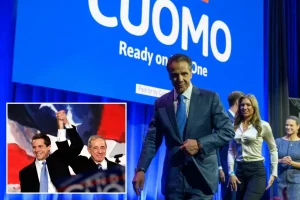Trade War Escalation: New Tariffs and Economic Impact
President Trump’s administration implemented new taxes on Tuesday, marking another significant development in the ongoing trade tensions between the United States and China. This move came alongside the President’s threats to further expand the scope of his trade war with China, signaling that the economic conflict between the world’s two largest economies shows no signs of abating. The implementation of these new tariffs represents another chapter in what has become one of the defining economic policies of the Trump presidency, with far-reaching implications for American consumers, businesses, and international trade relations.
For ordinary Americans, these new taxes will likely translate to higher prices on a variety of imported goods from China. Economists have consistently pointed out that while tariffs are ostensibly aimed at foreign producers, the practical reality is that American consumers often bear the brunt of these increased costs. Small business owners across the country have expressed concern about their ability to absorb these additional expenses without passing them on to customers, potentially creating a ripple effect throughout the economy. Many retailers had already been stocking up on inventory in anticipation of the tariffs, but now face difficult decisions about pricing strategies as the holiday shopping season approaches.
The President’s threats to expand the trade war reflect his administration’s belief that aggressive economic measures will force concessions from China on issues ranging from intellectual property protection to market access for American companies. Administration officials have defended the tariffs as necessary leverage in ongoing negotiations, arguing that short-term economic pain will lead to more favorable trade conditions in the future. Critics, however, question whether this confrontational approach will achieve its stated goals, particularly as China has shown willingness to implement retaliatory measures of its own and seek alternative trading partners, potentially reducing its dependence on American markets.
Financial markets have responded with volatility to these developments, as investors attempt to gauge the long-term implications of escalating trade tensions. Some sectors, particularly manufacturing and agriculture, have experienced significant disruption as Chinese counter-tariffs target key American exports. Meanwhile, supply chains built over decades of globalization face unprecedented challenges as companies scramble to adapt their operations to an increasingly unpredictable trade environment. Many businesses report postponing major investments due to uncertainty about future trading conditions, potentially impacting economic growth beyond the immediate effects of the tariffs themselves.
The international community has watched these developments with growing concern, as the trade dispute between the United States and China has implications far beyond the two countries directly involved. Global economic growth forecasts have been revised downward by several international organizations, citing trade tensions as a primary risk factor. Allied nations have found themselves caught in a difficult position, balancing long-standing relationships with the United States against their own economic interests and commitments to international trade systems. Some observers worry that the normalization of tariffs as a policy tool could undermine decades of progress toward more open international trade, potentially fragmenting the global economy into competing trade blocs.
As these new taxes take effect and the threat of expanded tariffs looms, both supporters and critics of the administration’s approach are watching carefully for signs of how China will respond and whether negotiations will progress toward a resolution. The stakes extend beyond immediate economic impacts to questions about the future architecture of global trade and the relationship between the world’s largest economies. For American workers, businesses, and consumers, the practical consequences of these policy decisions will continue to unfold in the coming months, affecting everything from job security to the prices paid for everyday goods. The trajectory of this trade conflict remains one of the most significant economic storylines of the current administration, with implications that will likely extend well beyond the present moment.










